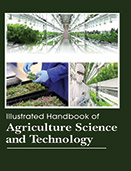Agriculture and Life Sciences

Today, our world produces sufficient food to nourish all people on the planet, although not everybody has access to it in the same degree. In the world of tomorrow the availability of sufficient food is no longer self-evident. In addition, questions arise about the quality of our food and the influence it has on our physical and mental health. In fact, the growth of the global population has made food security a very prominent issue on the geopolitical agenda.
Illustrated Handbook of Agriculture Science and Technology places equal emphasis on the practical applications and theoretical understandings necessary for study in agricultural science and technology. In spite of such criticisms, the book argues that global agriculture is on track to accomplish its main goals within numerous important, new constraints—but that it remains vulnerable to inappropriate priorities and policies. Thus, it describes key challenges that extend both to the sector and to the general public including, especially, opinion leaders and policymakers. Its purpose is to help readers reach more fully informed views about agriculture, its needs, its objectives and the policies that should govern it.
Technological change has been the major driving force for increasing agricultural productivity and promoting agriculture development in all countries. In the past, the choice of technologies and their adoption was to increase production, productivity and farm incomes. Over many decades, policies for agriculture, trade, research and development, education, training and advice have been strong influences on the choice of technology, the level of agricultural production and farm practices. Agriculture is becoming more integrated in the agro-food chain and the global market, while environmental, food safety and quality, and animal welfare regulations are also increasingly impacting on the sector. It is faced with new challenges to meet growing demands for food, to be internationally competitive and to produce agricultural products of high quality.
This Illustrated Handbook of Agriculture Science and Technology is intended to help readers reach more fully informed views about agriculture, its needs, its objectives and the policies that should govern it. Thus, it describes key challenges that extend both to the sector and to the general public including, especially, opinion leaders and policymakers.
Farmers have always looked to new technologies as a way to reduce costs. In addition, higher incomes, greater knowledge and improved channels of communication are leading consumers to demand low-cost food of higher quality increasingly produced through organic methods in many countries, with more variety, consistency and year-round availability. At the same time, consumers are increasingly demand.
ing that their food be produced using techniques that conserve natural resources, limit environmental pressures and pay greater attention to rural viability and animal welfare. The process of trade liberalization is widening the sources of supply and the degree of competition.